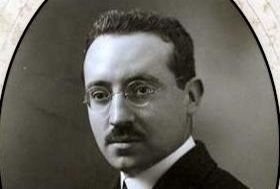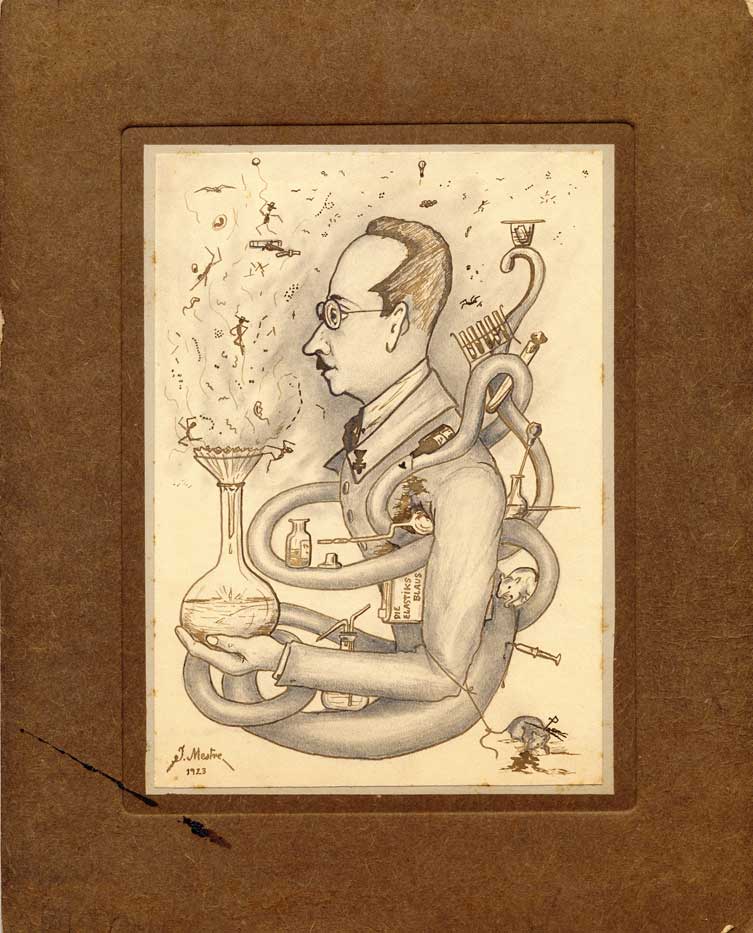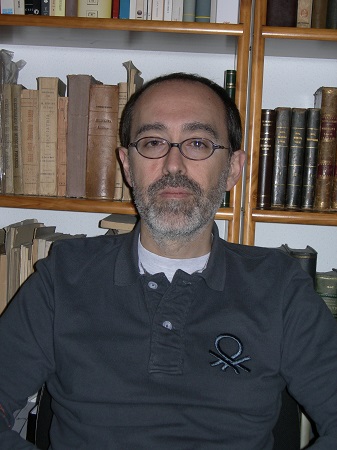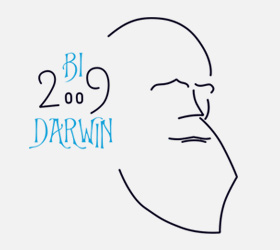
On May 24, 1941, Joan Peset was executed by firearm at the Paterna cemetery. Thus, a sentence was executed that had sentenced him to death a year before. The crime? None. The excuse? “Help to the rebellion”. I have often wondered if that day he remembered that another May 24, but thirty-one years earlier, he had won the chair of legal medicine in Seville, the starting point of a brilliant academic and professional career that was truncated for fascist violence.
However, his murder did not only mean his physical elimination. In my opinion, his enemies also achieved his “civil death” and his “intellectual death”. Why do I say this? Because the different acts of claiming the figure of Peset have not transcended far beyond the academic sphere, and because the majority of Valencians know little or nothing about him, although a hospital and a large avenue of the capital of the country are named after him. In addition, and perhaps it is a subjective impression, I have always felt that much has been reminded of his role as Vice Chancellor of the University and a representative of Izquierda Republicana, despicably murdered by the Franco regime, and very little of his scientific and professional activity.
Because Peset was, above all, a scientist. Of course, a scientist who understood that he neither could nor should stand aside the society in which he lived, so he decided to actively participate in this regenerative and modernising project that meant the arrival of the Republic. And, how did he do it? Using his professional and intellectual prestige. For this reason, whenever I have been invited to talk about Professor Peset, I have tried to vindicate this facet of a man of science, with recognised solvency both in Spain and in Europe. On the other hand, I am of the opinion that Valencians cannot afford to ignore a key figure in the history of our medicine. Let’s do it, then.
Joan Peset was born in Godella on July 2, 1886 in a lineage of doctors that dates back to the eighteenth century. His great-grandfather and his grandfather had been doctors. So was his father, Vicent Peset. He, doctor in medicine and in chemical sciences, in 1888 had founded a laboratory where he carried out his professional activity, a task that was compatible with teaching at the Faculty of Medicine, first as assistant professor and, since 1892, as professor of therapy.
Thus, medicine, laboratory and teaching were present in the life of young Peset from the beginning. No wonder, the same year in which he finished the baccalaureate he obtained the title of chemistry expert (1901) and began to collaborate in the family business. And it cannot be surprising that, when he started the university stage, it oriented him towards obtaining an education that allowed him to devote himself to teaching a specialty such as legal medicine. To this end, in addition to earning a doctorate in medicine (1907), he earned one in chemical sciences (1908) and one in law (1909), without forgetting he obtained a pension from the Council for the Extension of Studies and Scientific Research (JAE) to specialise in chemical analysis applied to legal medicine.
Indeed, Joan Peset was part of the first group of pensioned by JAE and, at the end of November 1907, he travelled to Wiesbaden, where he started a stay at the Fresenius laboratory, one of the most prestigious centres in Europe in the field of analytical chemistry. A few months later he moved to Paris to continue his training at the toxicology laboratory led by Jules Ogier.
But Peset went beyond the initial objective of his study trip: during the Paris stage, he took the opportunity to attend classes on autopsy and work medicine taught by the professor of legal medicine Léon Thoinot, as well as to be instructed in criminal identification techniques and metric photography under the mastery of Alphonse Bertillon.
At the end of May 1908, Peset returned from his scientific trip to Europe. He had perfected the solid laboratory training he already had when he left. In addition, staying in two of the leading laboratories in Europe allowed him to establish personal and professional relationships with scientists from other countries and, in the process, he was able to be published in prestigious magazines such as the German Zeitschrift für Analytische Chemie or the French Annales d’Hygiène Publique et de Médecine Légale, circumstances that allowed him, without a doubt, to give “visibility” to the scientific activity that he developed throughout his professional career.
On the other hand, the reports he had monthly sent to JAE during his pensioned stay, in addition to the publications derived from his investigations and the favourable evaluations of his teachers, allowed him to obtain the certificate of sufficiency of the Council, which facilitated access to university teaching staff.
It is not surprising, then, that with this intellectual baggage he obtained the chair of legal medicine of Seville in 1910, at only 24 years old. Thus began a university degree in which the young teacher applied from the outset the teaching techniques learned during his European journey. Convinced of the importance of practical teaching in high quality teaching, he set up a laboratory with all the instruments designed by his master Ogier in order to offer students a learning distant to the usual master class. This way of doing will accompany him throughout his career as a teacher, both in Seville and Valencia where, for transfer, he returned in 1916. Thus, students learned the different forensic techniques, such as the detection of arsenic using Marsh apparatus or studying blood stains, while attending medicolegal autopsies or visiting the asylum to study mental patients. And all this together with a close contact with students, not very frequent at the time, such as the fact that they allowed them to take exams on parts of the subject, at any time and in the most unsuspected places: theatres, tramways, etc.
However, during the Valencian stage, a qualitative leap was launched shortly before leaving Seville: he went from being a teacher to being a “master”, that is, to set the trend. So it has been evidenced by eleven doctoral theses directed by him and various articles published by his disciples under his guidance. In addition, a large part of the medical professors of legal medicine from Spanish universities were under his guidance before the Civil War. Peset educated some of them from their stage of students. Others, already licensed, went to study with him from various points of the country to improve their toxicological and laboratory training before STUDYING FOR THE Chair position. No wonder Ricardo Royo-Villanova, who became a lecturer of that subject at the Central University, in 1925 already considered Joan Peset “our main authority in the field of forensic toxicology”.
This mastery went beyond the university environment and will extend to the professional area: at the Provincial Institute of Hygiene of Valencia, headed by Peset, health inspectors, doctors of external health and other professionals of the public health were trained. With this institution, Peset restarted its activity in Valencia outside the university field: laboratory medicine, activity that had already started in Seville in 1911 as director of the municipal bacteriological laboratory.
However, the Institute was a more personal project: founded by the health inspector Joan Torres and by Peset himself in 1916, it had a service contract with the Valencia Provincial Council through which he was committed, in exchange for an annual subsidy, to act as a laboratory of the General Hospital, and also to cover other needs of the provincial corporation in the field of water analysis or vaccine preparation, while being allowed to privately perform such kinds of tasks.
A few years later, when Torres died, Peset remained as sole director and, in fact, the Institute and the laboratory founded by his father, Vicent Peset, merged and formed a single business until 1930, when the Provincial Council bought him the Institute and terminated the contract. From then on, Joan Peset continued his professional work directing the family laboratory, extending his activities to the production and marketing of drugs shortly thereafter.
Without a doubt, two things stand out in Peset’s work at the Institute: first, the fight against typhoid fever, which had already begun in Seville. Indeed, as head of the bacteriological laboratory of this capital, he was commissioned to study in Paris the vaccine devised by Hyacinthe Vincent and, when he returned, he began to prepare it in the Andalusian laboratory, in order to start the first vaccination campaigns for the province. Once in Valencia, he restarted this activity, in which his role during the epidemics suffered in Cheste (1916) and Torrent (1917) was of vital importance. We can get an idea of the magnitude of this task because it was awarded twice by the Spanish government. And not only that: Vincent, the creator of the vaccine, referred to him as the apostle of the vaccination, and in 1918 he was invited to lecture on typhoid vaccines at the Faculty of Medicine in Paris, at the same time as he was appointed honorary member of the Société de Thérapeutique.
It was not without significance the activity he performed during the 1918 flu epidemic, in collaboration with doctors Colvée and Rincón de Arellano, to develop a vaccine against pneumococcus, a microorganism that they had identified in all the most serious cases and that was causing the respiratory complications of the disease. His role in this health crisis was also highly valued among the medical community, as Fernando Rodríguez Fornos’s opinion certifies: a prestigious clinician and professor at the Faculty of Medicine of Valencia, he considered that Peset’s researches on the flu were those made “with more rigor and scientific seriousness” throughout the state, as well as those that were “more in harmony with what the clinic teaches”.
As expected, its activity in the chair and the laboratory resulted in a considerable volume of published works, about a hundred, both in Spanish and foreign magazines. This task had a not at all negligible degree of impact in the scientific community. Good proof of this is that many of these articles were reviewed in publications such as the French Bulletin of the Académie Nationale de Médecine or the German Chemisches Zentralblatt, and cited in texts such as the chemical toxicology of Léon Barthe, professor of that subject in Bordeaux, the treatise on toxicological chemistry of its master Ogier or the legal medicine treatise of the Spanish Lecha Martínez and Lecha Marzo.
And what topics does Peset write about in his published texts? Well, we can distinguish two fields: obviously legal medicine and what we could call generic laboratory medicine, including immunology and bacteriology. Of the first group stands out the work related to microchemical methods, in its two aspects: toxicological microchemistry, mainly oriented to the detection of alkaloids; and medicolegal microchemistry, applied in the field of criminalistics to the study of stains produced by body fluids. In both of them he will make new contributions and will maintain some scientific controversy with other authors, such as the Italian Angelo de Dominicis, as well as being a starting point for a line of research that his disciples will follow.
As for to laboratory work, those related to typhoid fever are worth mentioning. I have already spoken about its importance and I will not extend too much. I just want to add that his work in this field was one of the most reviewed by other authors, and he emphasises his proposal to replace, at least in the Valencian Country, the typhoid vaccine for a mixed one that will also act against Malta fever.
At this point I cannot fail to mention his draft legal medicine treaty. The initial idea of Peset and of publisher Manuel Marín was a two-volume work, about six hundred pages each, the first of which should have been published in 1927, and the second, the following year. It is a known fact that this was not the case and that the treatise was never published. The reasons why? Well, I have always thought that his self-assigned rigor when it came to publishing a text of these characteristics added to Peset assuming management tasks at the University. Both factors, together with their involvement in politics, hindered the completion of what could be one of the great legal medicine treatises of the moment.
Teaching, work, publications ..., what else? He attended conferences, lectured and, in 1928, reactivated Crónica Médica. Considered one of the best Spanish medical journals of the time, among its writers were the best of Valencian medicine, such as Puche, Urtubey, Rincón de Arellano, Fornos or Barcia. And a detail: from its pages the publication of the Spanish Index of Medical Literature began, recognised as one of the first attempts in Spain to create a bibliographic information system in health sciences.
The recognition and acceptance of institutional positions was a result of this task. I have previously mentioned some of them. Others: Honorary Professor of the Institute of Legal Medicine, Psychiatry and Toxicology of the Central University; President of the Valencian Medical Institute; Vice President of the Royal Academy of Medicine of Valencia; appointed Officier de l’Instruction Publique by the French government,... And at the University, Dean of the Faculty of Medicine, vice-rector and, finally, the rectorate, not at all calm by the way. It started with the fire of the building of la Nau Street, which caused protests among students due to the negligent action of local authorities. Peset had to use all his convincing ability and all his dialoguing spirit to appease students, and it was not the only time.
As we can see, a profile that nobody would call revolutionary and that served the candidacy of the Popular Front in the 1936 elections, where he was the most voted candidate in the circumscription of Valencia. Afterwards, the war, where he performed tasks the winners considered deserving of the most severe punishment: civilian commissioner of the army, director of the Hospital Association of Castellón and director of the Base Hospital of Valencia, at the same time as he continued to attend the already scarce obligations as deputy.
At the end of the fight, Albatera, and the Model, and the war advocates, and the death sentence with a conference as proof of the main charge (damned conference). Then, a long wait. Finally, Paterna.
To conclude, I go back to my reflections at the beginning of this article. This year marks the centenary of the arrival of Joan Peset to the legal medicine chair of Valencia. I think the best tribute that can be done is to remember who he was, what he was: a good man, committed to his people. But also a top-level scientist, whose task we must disclose and vindicate. Because it gives us prestige as a people. And we Valencians need it. Now more than ever.
Felip Martínez Montsó
Department of History of Science and Documentation of the University of Valencia
Personatges i espais de ciència (‘Science characters and spaces’) is a project of the Unit of Scientific Culture and Innovation of the University of Valencia, with the collaboration of the “López Piñero” Institute of History of Medicine and Science and with the support of the Spanish Foundation for Science and Technology and of the Ministry of Economy, Industry and Competitiveness.






















